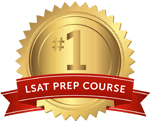The Law School Admissions Test (LSAT) is a test that’s administered by the Law School Admission Council. For students who want to pursue a career in law, the LSAT is one of the first challenges. Having a good LSAT score is often the difference between getting into a good school or missing out on an opportunity to attend one that will start your career on the right track.
While the test can be taken multiple times, having a good score on your first LSAT can boost your confidence and help you achieve your dreams faster. That said, the LSAT is a complex exam. If you’re preparing for your first exam or need a refresher, we’re here to help. We’re going to take you through everything you need to know about the LSAT exam and its format. Read on to learn more.
What Is the LSAT Exam?
The Law School Admissions Test (LSAT) serves as a barrier of entry for law schools. Students take the LSAT and are given a score. Law schools use the score to learn about students and determine if they’re a good fit for law school. While the LSAT isn’t the only factor, it’s one of the most important elements an aspiring lawyer will be judged by.
What’s on the LSAT?
The LSAT format consists of five sections. These sections include logical reasoning, logic games (analytical reasoning), reading comprehension, a writing sample, and a variable section. It’s also important to note that the logic games section is separated into two sections, which is why the test has five total sections.
The questions on the test are designed to test a student’s skills in law, reading, and reasoning. Compared to exams like the SAT, the LSAT is geared towards testing a student’s problem-solving abilities.
How Long Is the LSAT?
The LSAT is a long exam and has a run-time of 3 hours and 30 minutes. Each section of the test is 30 minutes long and has between 22 and 28 multiple-choice questions. The only exception is the writing sample section, which consists of writing in-depth responses instead of answering multiple-choice questions.
LSAT Format by Section
Knowing the format of the LSAT before you take the exam gives you an advantage. It’s also important to stay up to date on the LSAT and how it may have changed if you’ve taken the test in the past.
We’re going to take you through the format of each section on the LSAT exam.
Logical Reasoning
The logical reasoning section of the LSAT is one of the longest sections and accounts for 50% of your total score. This part of the test is split into two sections and each one is 30 minutes in length. The purpose of the logical reasoning section is to determine a test taker’s skills in reviewing, critiquing, and analysis. Because some questions require reading about legal arguments, the logical reasoning section is the portion of the test that’s the most law-focused.
The logical reasoning section of the exam consists of multiple-choice questions. There is typically a paragraph or two before the answers, and test-takers need to analyze the arguments to find the correct answer. Some answers are purposefully misleading, and only a few words can separate the right answer from the wrong answer. For this reason, reading comprehension and analyzing the argument are essential for success; simply using the process of elimination to find the right answer is not enough for the logical reasoning sections of the LSAT.
While the logical reasoning section of the exam is challenging, it’s not impossible; the test takers who perform the best are good at identifying the most likely answer quickly. Overall, the logical reasoning section is about understanding the core of an argument and applying what you’ve learned to eliminate multiple choice answers.
Logic Games (Analytical Reasoning)
The logic games section of the LSAT is exciting for some test takers and dreadful for others. This section of the LSAT exam consists of four “games” that test-takers need to play. For this section of the exam, students have 35 minutes to complete all four of the logic games.
The premise of the logic games is straightforward. Each game begins with a scenario. The scenario has a set of rules that students need to follow, and there are typically between 3 and 6 constraints. While some rules apply to multiple scenarios, most scenarios have unique rules, and test-takers need to determine what those rules are and how they apply to the potential answers.
When it comes to the types of games in the logic games section, there are three common types. The three types are grouping, ordering, and assignment. Before taking the LSAT, test takers should practice each of the games with practice exams and tutors. This increases the chances of success because test-takers will have a better understanding of the games and the potential rules they need to follow.
Still, the LSAT is a complex exam. Students need to be prepared for curveballs and other random challenges within the logic games section. For this reason, test-takers need to be adaptable. Plus, the games are not always straightforward and may consist of a combination between ordering and grouping.
Reading Comprehension
The reading comprehension section of the LSAT is different from the other multiple-choice sections. There are four parts for the reading comprehension section and each question has about 60 lines of text that test-takers need to read. The 60 lines are broken down into three to five paragraphs. While the topics in the reading comprehension section don’t pertain to law, that’s not the purpose of the section; it’s designed to test a student’s ability to process information and answer questions.
The reading comprehension section is split into a few topics. These topics are law, natural sciences, social sciences, and humanities. While students are not expected to have prior knowledge on these subjects, students need to comb through the answers and paragraphs quickly to come up with answers in a reasonable amount of time. Each question is also grouped into one of three categories, like the logic games section.
The categories are synthesis, identification, and inference.
Synthesis
The synthesis-type questions focus on students expanding on the reading. Instead of finding information in the reading, students need to form their own conclusions and expand on things mentioned in the text. For this reason, synthesis-type questions are more challenging than the other question types because the answer isn’t directly in the text.
Inference
Inference-type questions are similar to synthesis-type questions, but the answer is easier to deduce from the text (in most cases). This is because students need to find a relevant passage and expand on some ideas presented within it or find the answer that restates what was said in the passage.
Identification
The last type of question that students will find is identification. While the other question types require a student to find meaning from the passage, identification is more straightforward. With identification-type questions, the answers are found within the text. While the answers aren’t obvious, students can comb through the answers and the text to find all of the information they need.
Writing Sample
The writing sample is another 35-minute section on the LSAT. While the other sections are scored, the writing sample section does not get scored. Instead, it’s sent to the colleges that students apply to. For this reason, some colleges don’t consider the writing sample and other schools do. We recommend trying your best on the writing sample regardless so that it can be used to boost your appeal if you end up deciding to apply to a school that does consider this section.
The writing sample is a straightforward portion of the LSAT. Students must construct a clear argument and present information about a particular subject, which can vary. The purpose of the writing sample is two-fold. First and foremost, it provides insight into how well a student can construct an argument in a short period. Secondly, it’s used to demonstrate how well a student can write and show their thoughts in written form.
Keep in mind that while we always recommend trying your best with the writing sample, you don’t want to try too hard to be clever. The point is to showcase how well you can put together a strong, supported argument and communicate it clearly.
Wrapping Up
Knowing what to expect before you take the LSAT can have an impact on your score and confidence. Therefore, it’s important to understand the format of the exam so you’re prepared for each of the five sections.
While the exam is challenging, giving yourself time to prepare can help you achieve the score you’re looking for. Furthermore, working with a qualified LSAT tutor can help you achieve an even higher score.









